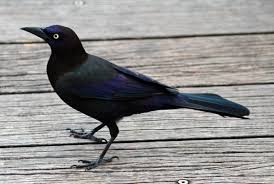Flying ants can be a bit of a nuisance, especially when they swarm. In Florida, these insects are quite common, and understanding them can help you manage them better. If you’re curious about flying ants in Florida, this article will provide you with all the information you need, from their behavior to how to deal with them. So, let’s dive in!
What Are Flying Ants?
Flying ants are basically just regular ants that have grown wings. These wings are a part of their life cycle. Ants go through different stages: egg, larva, pupa, and adult. When they are adults, some ants develop wings. This usually happens during mating season. Both male and female ants can have wings, but their roles are different. The males are there to mate, and the females are the future queens looking to start new colonies. Also read Flying Ants in Florida: Everything You Need to Know
Why Do Flying Ants Appear in Florida?
Florida’s warm, humid climate is perfect for many kinds of insects, including flying ants. The state’s weather creates an ideal environment for ants to thrive and reproduce. Flying ants typically appear in Florida during the spring and summer months when the weather is just right for their mating flights. These flights are also called nuptial flights. During these flights, ants leave their old nests to find new places to start colonies.
The Life Cycle of Flying Ants
To understand why flying ants show up, it helps to know their life cycle. The life cycle of an ant goes through several stages:
- Egg: The queen ant lays eggs. These eggs are very tiny and often hard to see.
- Larva: The eggs hatch into larvae, which look like small worms. They are fed by worker ants until they are ready for the next stage.
- Pupa: The larvae then turn into pupae. This stage is like a cocoon where the ant starts to take its final form.
- Adult: After the pupal stage, adult ants emerge. These ants can be workers, soldiers, or reproductive ants. The reproductive ants are the ones that develop wings and will eventually become flying ants.
How Do Flying Ants Affect People?
Flying ants can be a bit of a problem when they swarm. While they don’t sting like bees, their large numbers can be overwhelming. Swarming ants can invade homes and other buildings, causing distress. They don’t pose a health risk, but they can be a nuisance. If you notice a lot of flying ants in your home, it might be a sign that they are trying to start a new colony nearby.
How to Prevent Flying Ants from Invading Your Home
Preventing flying ants from becoming a problem involves keeping your home and yard less attractive to them. Here are a few tips:
- Clean Up: Flying ants are attracted to food, so keeping your home clean is essential. Make sure to clean up crumbs and spills promptly.
- Seal Entry Points: Ants can get into your home through even tiny cracks. Seal up any gaps around doors, windows, and foundations.
- Remove Outdoor Nests: If you notice ant nests in your yard, consider treating them or getting professional help to remove them. This can help reduce the number of ants that might end up in your home.
- Proper Waste Management: Store trash in tightly sealed containers. Regularly clean garbage bins to prevent attracting ants.
What to Do If You Have a Flying Ant Infestation
If flying ants become a significant issue, it might be time to take some action. Here’s what you can do:
- Identify the Source: Finding out where the ants are coming from is crucial. Look for their nests outside or inside your home.
- Use Baits and Traps: Ant baits can be an effective way to get rid of ants. They attract ants, which then carry the poison back to their nest.
- Consult a Professional: If the infestation is severe or hard to manage on your own, it might be best to contact a pest control professional. They can help you with more advanced treatments to get rid of the ants.
The Importance of Flying Ants in the Ecosystem
While flying ants can be bothersome, they do play an important role in the ecosystem. They help break down organic matter and contribute to the soil’s health. By doing this, they help plants grow and keep the environment balanced. So, while they might not be your favorite insects, they are crucial for the health of our planet.
Fun Facts About Flying Ants
Here are a few interesting tidbits about flying ants that you might find fascinating:
- Not All Ants Fly: Only the reproductive ants in a colony have wings. Worker ants and soldier ants do not have wings.
- Short-Lived Wings: The wings of flying ants are not permanent. After mating, the ants typically shed their wings.
- Amazing Navigation: Flying ants use the sun and landmarks to navigate during their nuptial flights. This helps them find new places to build their colonies.
How to Educate Kids About Flying Ants
If you have kids, teaching them about flying ants can be both fun and educational. Explain that flying ants are just like regular ants, but with wings for a short time. You can use simple language and even make a fun activity out of it, like drawing pictures of ants and their wings. Kids can learn about the importance of insects in nature and how they help the environment.
Conclusion
Flying ants in Florida are a common sight, especially during the warmer months. While they can be a bit of a nuisance, understanding their behavior and life cycle can help you manage them better. By keeping your home clean and sealing entry points, you can reduce the chances of a flying ant infestation. Remember, flying ants play a valuable role in nature, so it’s important to handle them with care and respect.
With these tips and insights, you’ll be well-prepared to deal with any flying ants that come your way. Whether you’re trying to keep them out of your home or just curious about these fascinating insects, knowing more about flying ants in Florida can make the experience a bit easier and more manageable.





